Hey there! If you've ever found yourself in the position of needing to withdraw a manuscript from consideration, you know it can feel a bit daunting. But don't worry, crafting a clear and concise withdrawal notification is simpler than it sounds! In this article, we'll walk you through a straightforward letter template to make the process easy and professional. Stick around to discover the essential elements to include and tips on how to keep your communication cordial and effective!
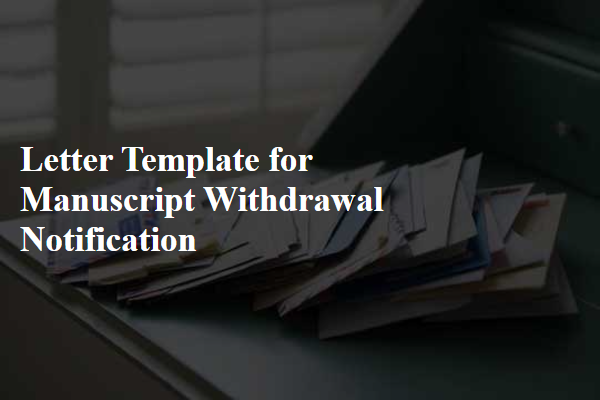
Clear and concise subject line
Manuscript withdrawal notifications require a clear and concise subject line to convey the key message effectively. An appropriate subject line might read: "Withdrawal of Manuscript ID [12345]: [Manuscript Title]". This format highlights the manuscript's unique identifier, which facilitates tracking within publishing systems, along with the title for immediate recognition of the work involved. Such clarity ensures that editors and reviewers quickly understand the nature of the communication while maintaining professional standards in academic correspondence.
Manuscript details (title, authorship)
Manuscript withdrawal involves the formal process of retracting a submitted work from consideration for publication. A manuscript titled "Innovative Approaches to Sustainable Energy Solutions," authored by Dr. Emily Carter, Dr. John Patel, and Dr. Sarah Kim, was initially submitted to the Journal of Renewable Energy Studies on March 5, 2023. Manuscript withdrawal may occur for various reasons, such as conflicts of interest, data discrepancies, or author disagreements. Notifying the journal editors promptly fosters good academic practices and maintains the integrity of the research community. The notification must include relevant manuscript identification details, authorship clarity, and a concise reason for the withdrawal request. Timely communication with the editorial office ensures that the submission status is updated accurately in the publishing system.
Reason for withdrawal
In the process of scholarly communication, a manuscript may require withdrawal due to various reasons. Common factors include identification of significant flaws in the research methodology, such as inappropriate sample sizes or errors in data analysis techniques, which could potentially undermine the validity of the findings. Additionally, ethical concerns regarding data integrity or allegations of plagiarism may arise, prompting the author to retract the work to maintain academic integrity. Furthermore, external issues such as the discovery of concurrent submissions to multiple journals can also necessitate withdrawal. Such actions ensure that the author upholds the standards of responsible publishing and contributes to the integrity of the academic community.
Confirmation of submission date
In academic publishing, the manuscript withdrawal notification should clearly state the confirmation of the submission date for an academic paper submitted to journals such as the Journal of Clinical Psychology or the International Journal of Educational Research. The submission date, typically recorded in the journal's system, serves as a significant reference for both the authors and the editorial team, impacting timelines for reviews and publication. Proper notification ensures transparency and allows the editorial board (composed of experts in respective fields) to manage their review processes efficiently. This confirmation is crucial, especially in cases where multiple submissions may lead to ethical considerations regarding duplicate publication.
Contact information for further communication
Manuscript withdrawal notification is essential for maintaining professional relationships in academic publishing. Authors should provide clear contact information, including emails and phone numbers, to ensure seamless communication with journals and editors. Specifying weekend availability can facilitate discussions, especially regarding urgent matters. Detailed contact information increases transparency between authors and journal editors, addressing potential concerns about future collaborations or resubmissions. Always include full names, institutional affiliations, and positions to enhance professionalism in correspondence. Clarity in communication solidifies trust between authors and the publishing community.
Letter Template For Manuscript Withdrawal Notification Samples
Letter template of manuscript withdrawal for resubmission to another journal.
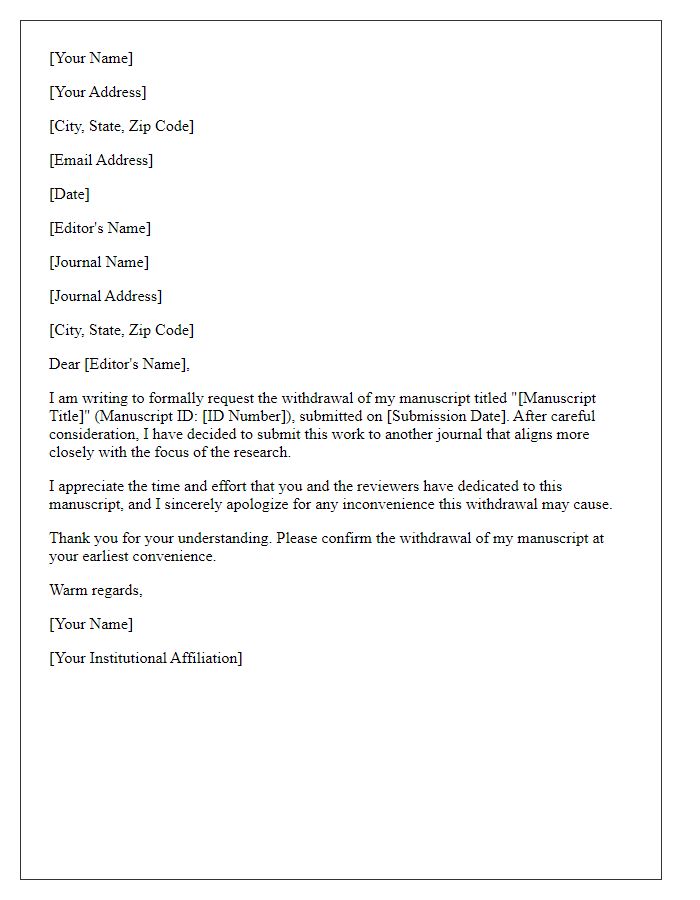

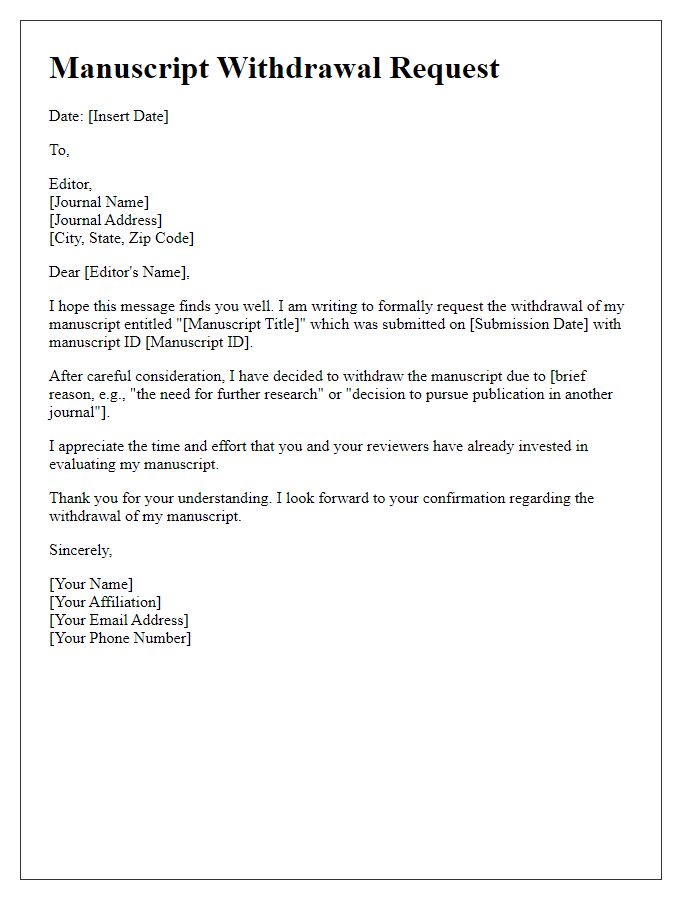
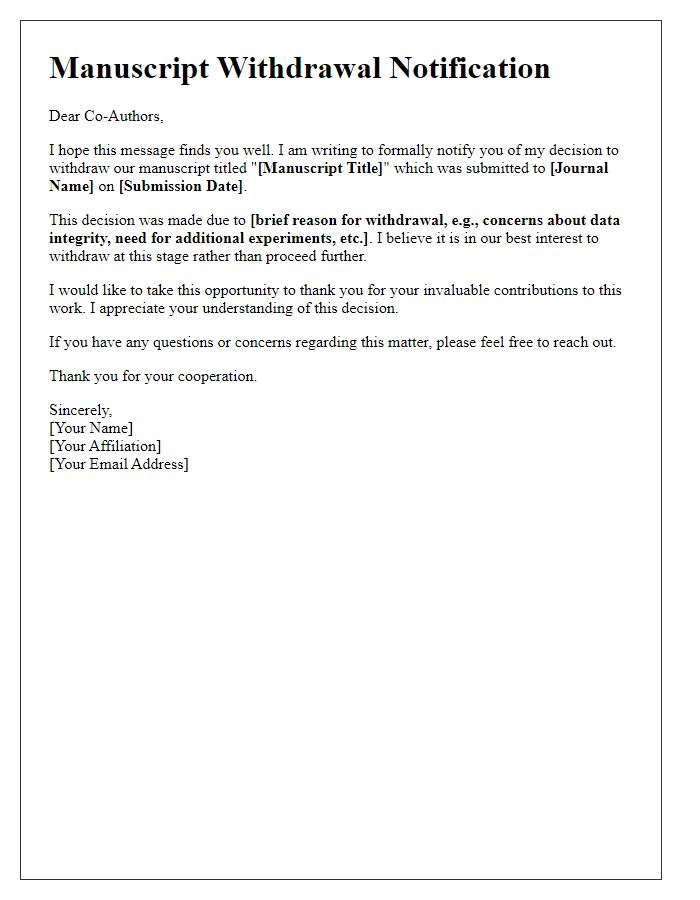
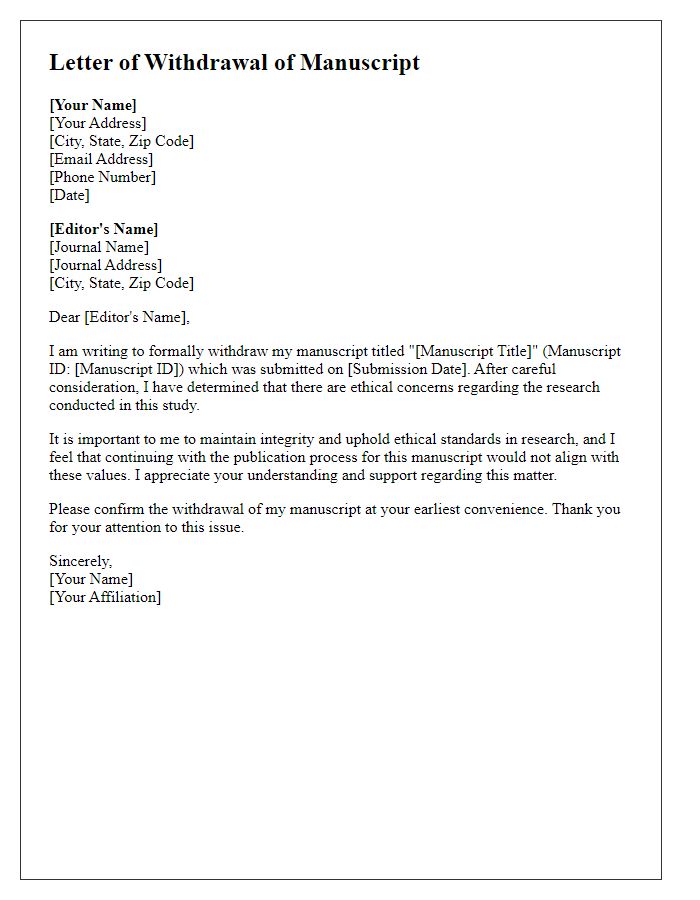

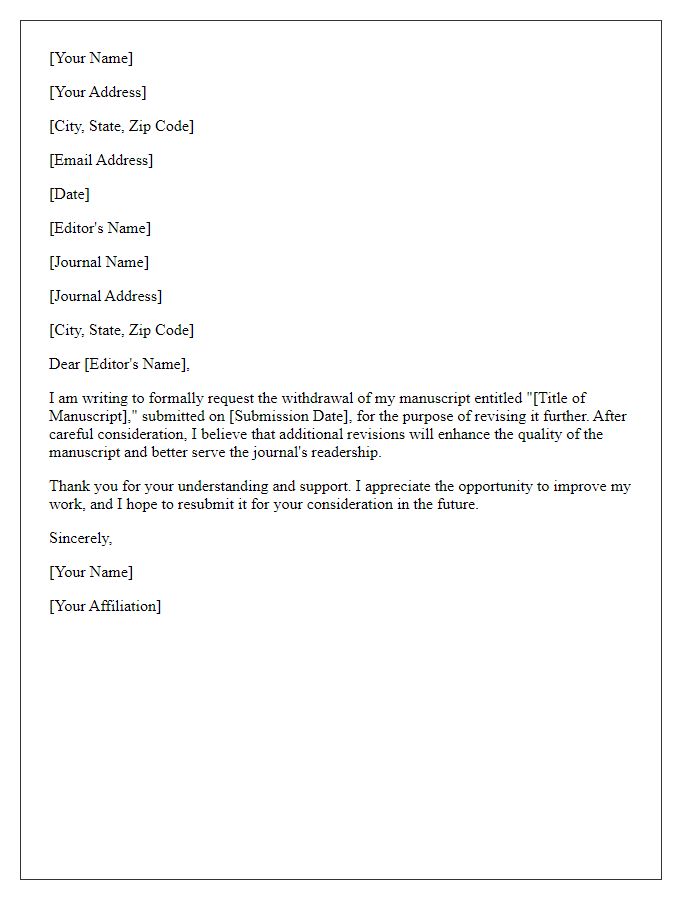
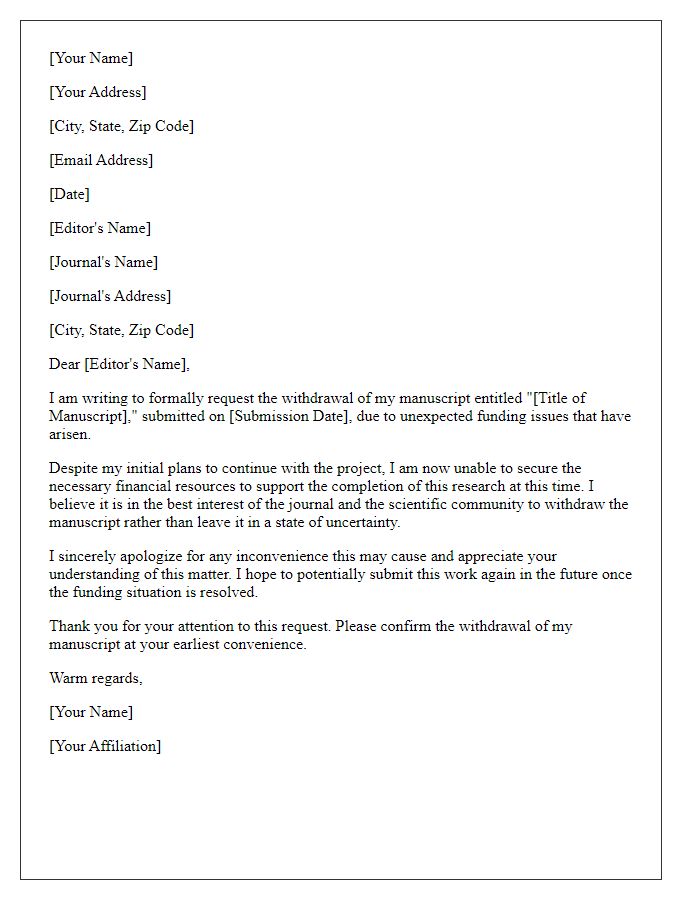
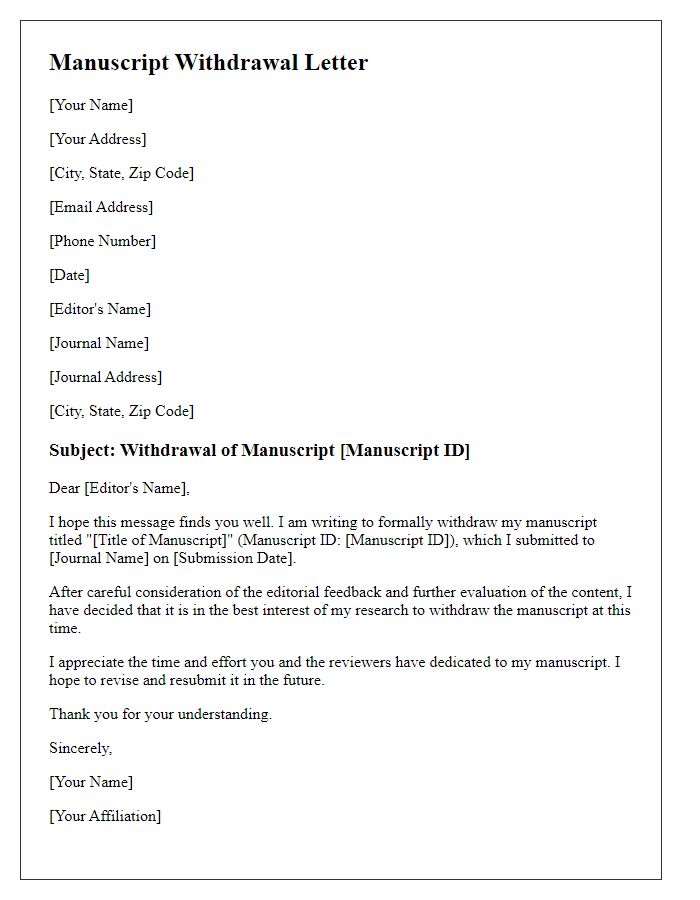
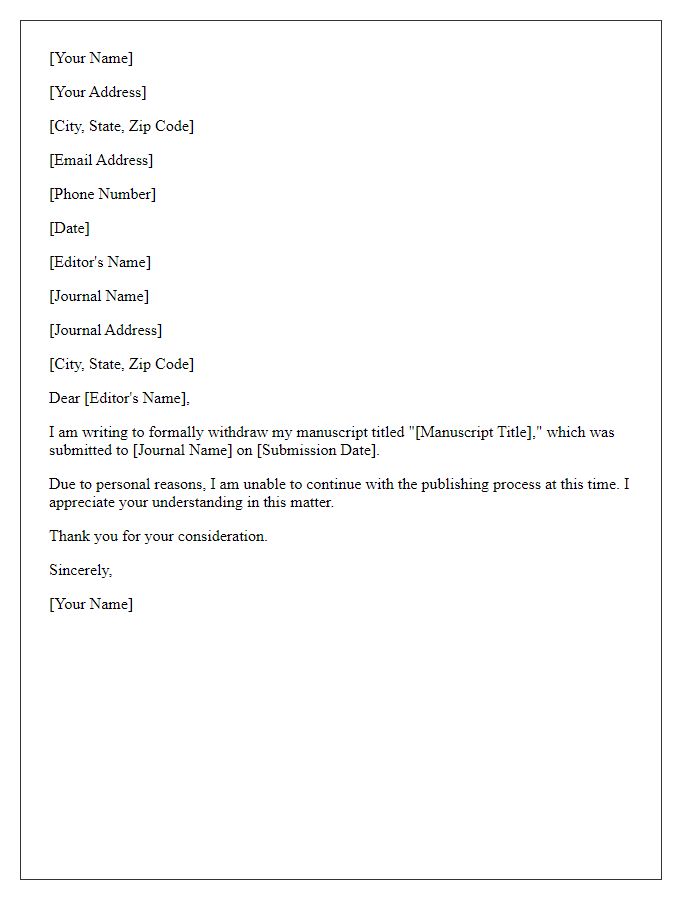
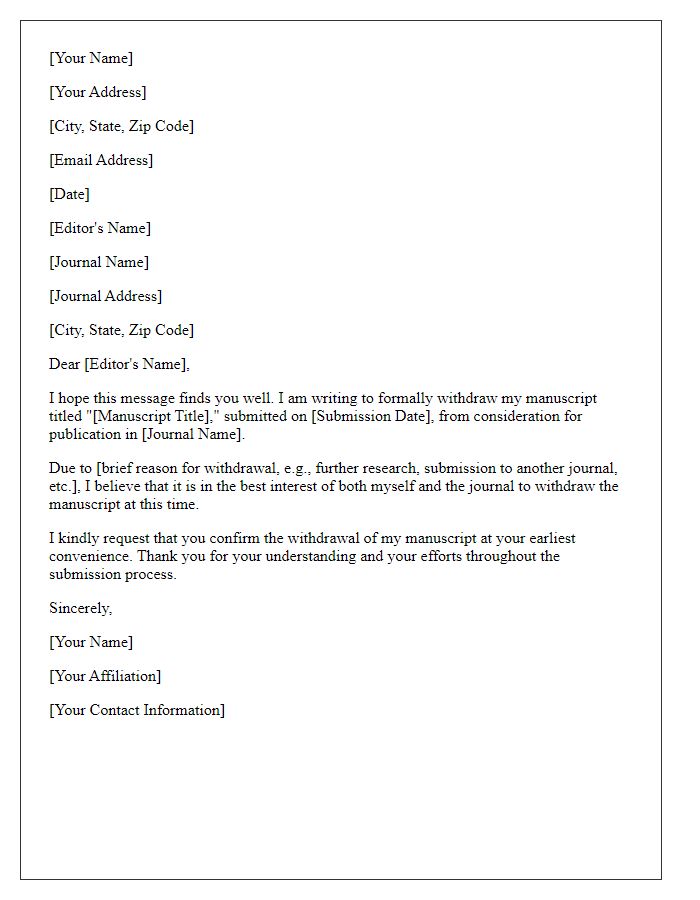

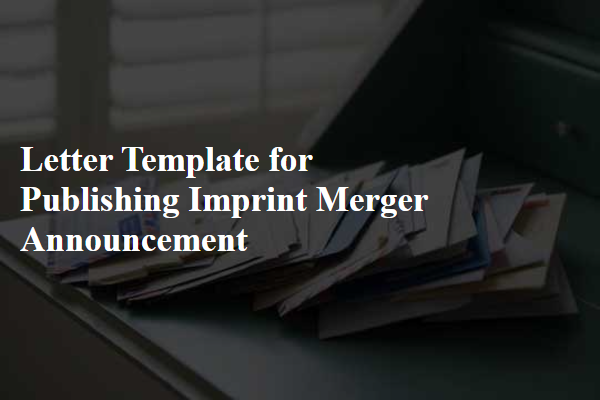
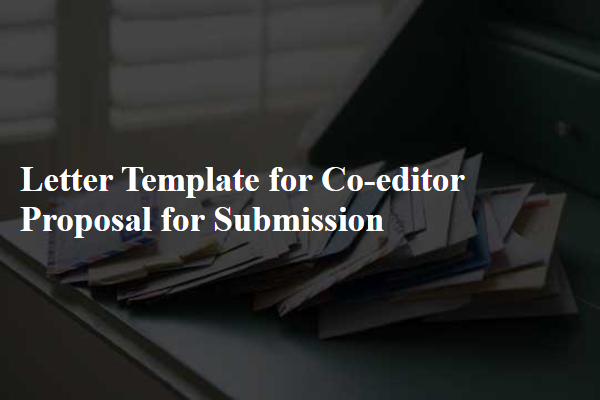

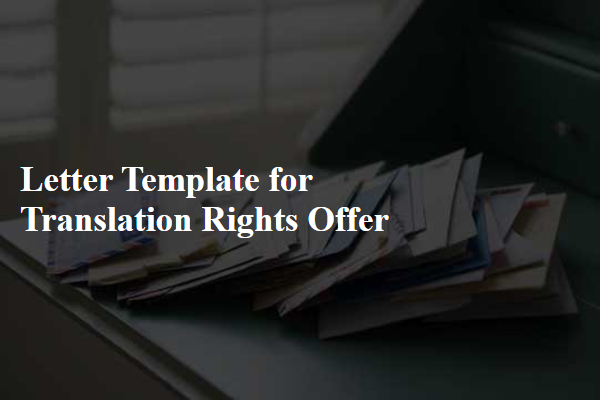
Comments